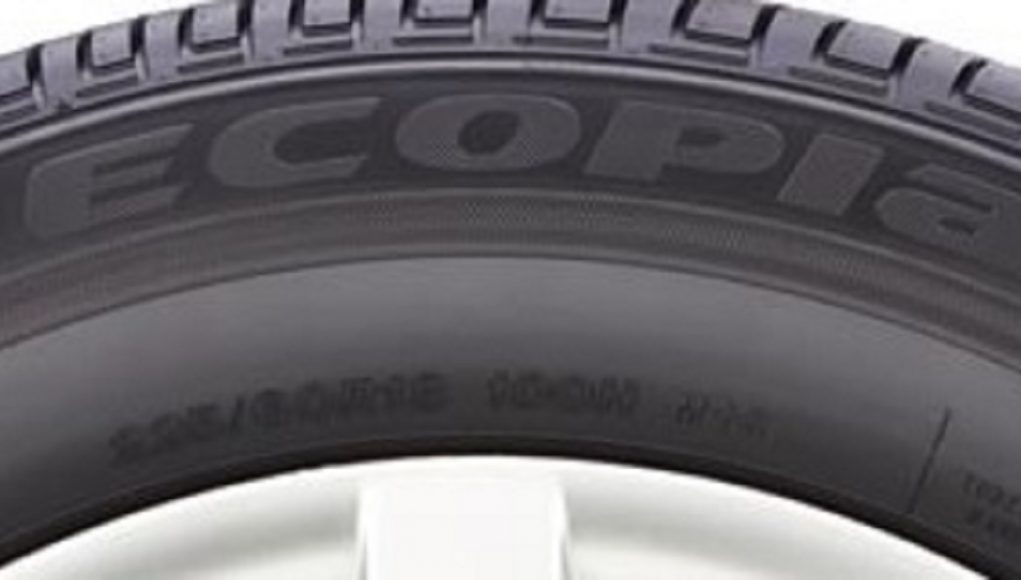Yes, Bridgestone Ecopia Tires are engineered for fuel efficiency, but does that mean less money spent overall?
As gas prices hit 2008 Recession-level highs this year, drivers are trying anything and everything to make their cars as fuel efficient as possible.
And, when it comes to a new set of tires, these gas prices have some tire shoppers preferring a less aggressive tire if it means more driving range realized between fill-ups.
Low-Rolling Resistance tires, or LRRs, are tires engineered with fuel efficiency in mind. That means a special gas-saving rubber compound and a tread pattern optimized for low-rolling resistance.
Bridgestone’s lineup of LRRs include the Ecopia H/L 422 Plus and EP422 Plus.
“The Ecopia EP422 Plus uses an enhanced all-season tread compound featuring Bridgestone’s unique NanoPro-Tech (Nanostructure-Oriented Properties Control Technology) to reduce rolling resistance and energy loss while maintaining dry, wet and wintertime traction.”
“A fuel saver sidewall compound also helps lower rolling resistance by both returning more energy back to the tire and reducing heat generation as compared to a traditional sidewall.“
While their eco-optimized tires may realize better MPG, here’s why that might not translate to overall savings.
Improved rolling resistance only based on one test.
Like any claim, it needs to be backed up by evidence. The only evidence Bridgestone provides is this quote,
When Bridgestone claims you’ll get more miles per tank, it’s…
“Based on rolling resistance in lab testing comparing Ecopia EP422 Plus (215/60R16 95T) to Firestone FR710 (P215/60R16 94T) when new (excludes original equipment tires).”
Unfortunately, Bridgestone does not link to any hard data we can pore over.
According to Firestone, the FR710 is an All-Season Tire for cars and Minivans.
A scan of their Trademarkia page reveals this tire first hit the market in 2006, a full nine years before the Ecopia.
And, here’s a screenshot of the landing page for the FR710 including a closeup of the tire in question.
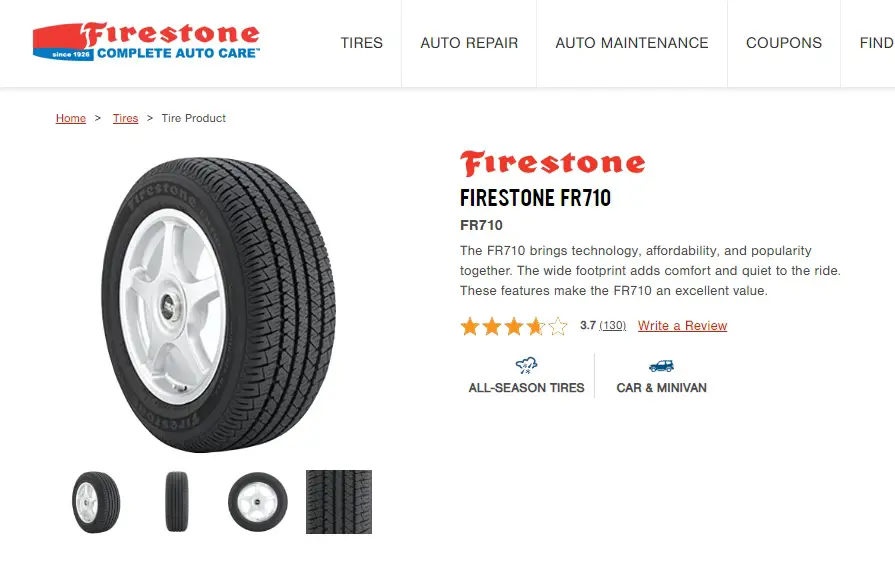
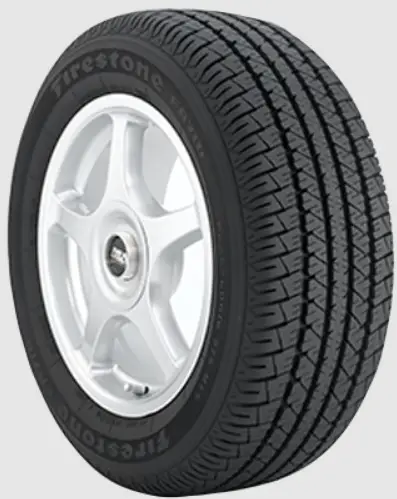
And, here’s an Ecopia EP422 Plus
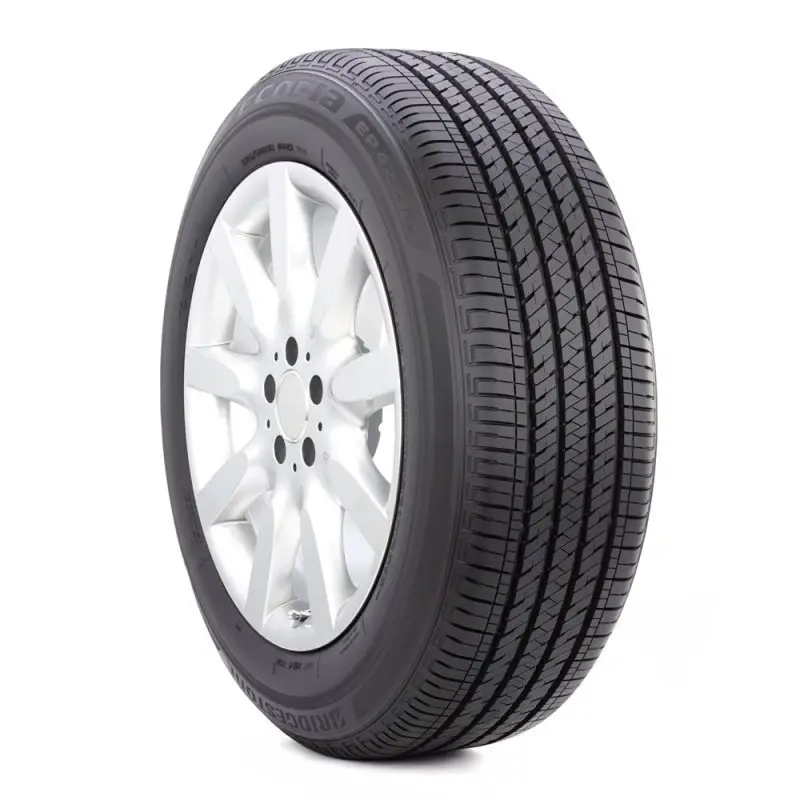
In my opinion, the FR710 sports an older tread design and is more optimized for sporty handling and all-season traction, not representative of the average tire on a car today.
It’s like Bridgestone choose a tire to compete against the Ecopia that would deliver the widest discrepancy measuring rolling resistance, not exactly un-biased testing (no pun intended.)
When Bridgestone first unveiled their Ecopia, they also claimed these tires would deliver 20 more miles additional range, that was before they emphasized that’s based on a “range projection.”
Bridgestone did not set up a test vehicle and measure range achieved in a controlled environment, they instead extrapolated an estimate based on rolling resistance measured.
Did Ecopia purchasers actually save money?
Before you buy Ecopia tires to improve MPG, first read what other purchasers went through.
I read Ecopia Tire Reviews from
There are a lot of reviewers who realized improved MPG and efficiency.
“Sure enough, I got an extra 3 to 4 miles per gallon on highway driving, ” wrote a 2016 Hyundai Sonata owner on Bridgestone.com via Walmart on May 22,2015 “Loved my Sonata for its 36 mpg highway before, and now I can get 40 mpg from time to time.”
“Lower cost and low rolling resistance rating were my objectives,” wrote a 2010 Mini Cooper owner on TireRack.com on Sept 21,2016 “These objectives were met and noticeably eased the coasting when approaching a stop. The Continentals that were replaced felt like I was braking every time I took my foot off of the accelerator.”
But, a common criticism I found by some Ecopia purchasers is their Ecopias did not last as long as they hoped they would. Ecopia tires have between a 50,000-70,000 mile warranty.
Here’s a screenshot of which Ecopia has what mileage warranty.
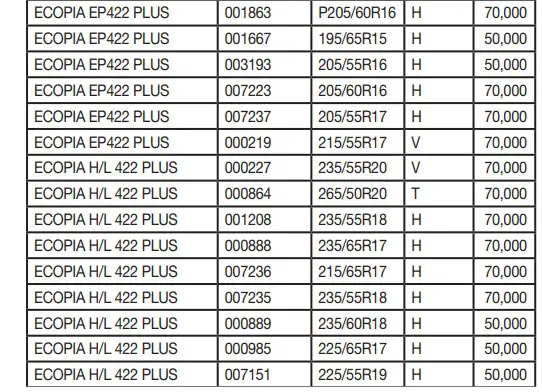
Here are some relevant reviews.
“These are the OEM tires that came on my 2021 Camry. I have 25K on the car and also the tires and the tires are done, “commented a 2021 Toyota Camry owner on TireRack.com on Feb 3, 2022. ” Anyway, there’s no excuse a claimed 70,000-mile tire is done at 25K and that’s with the dealership rotating them every 5K.”
“This MB GLC300 is very hard on tires (despite >30mpg) and is approaching the wear bars on all four tires at 20,000,” commented a 2016 Mercedes-Benz GLC300 owner on TireRack.com on Dec 11, 2021. “Disappointing compared to the 70K warranty.”
And that Sonata owner I first cited? Here’s the rest of his comment.
“My only complaint is they wear faster than I like. I’ve religiously kept my tires rotated, balanced and aligned, but I still will never reach 70,000 before I’ll need to replace them. I may get 40,000 if I’m lucky.”
If, for example, we cite what Consumer Reports found that, by switching to a low-rolling resistance tire, you can potentially, over the life of those tires, save up to $215 in gas savings compared to a regular all-season, it would not make financial sense IF you had to replace them twice as often.
Over $200 saved in gas, but they didn’t last as long as they hinted they would so, now you have to spend another $580, is a net loss.
If we take that Sonata owner who improved their MPG from 36 to 40, over their 40,000 mile lifetime and with gas at around $2.40 as of Sept 2015, assuming all highway mileage, he would’ve saved 111 gallons of gas or about $270. But, now he has to buy another set.
Yes, you can potentially improve MPG and fuel but, depending on your situation, at what cost?
Conclusion
It’s clear Ecopia tires do offer improved rolling resistance that can translate to better MPG.
When combined with proper inflation and maintenance, like scheduled tire rotation, you’re likely to see improved MPG over your old setup (YMMV.)
A tire with low rolling resistance tread compound means potential tradeoffs, and you might find that Ecopias aren’t as grippy or responsive in damp or wet weather conditions.
And, depending on the demands of your commute and how aggressively you drive, you may find they don’t last as long as you think they will. It’s my opinion that fast and aggressive drivers are the ones seeing their tires wear faster than normal, as these tires aren’t engineered with that kind of driving in mind.
Ecopia purchasers who are getting the most out of these tires and actually making them last are those that can live with ever-so-slight compromises if it means marginally better MPGs, that means hybrid owners and drivers not prone to aggressive driving.
If you’re someone who needs as much grip as possible in whatever condition and doesn’t want to think about it, but wants better MPGs with a tire change, these Ecopias might not be for you.
But, if you find efficiency fun and meticulously track how many miles you can eke out between fill ups, you can take advantage of Ecopias gas-saving tread compound and low-rolling resistance characteristics to realize better MPGs. Ecopias are for you and is that competitive edge in your fight against your gas budget.


